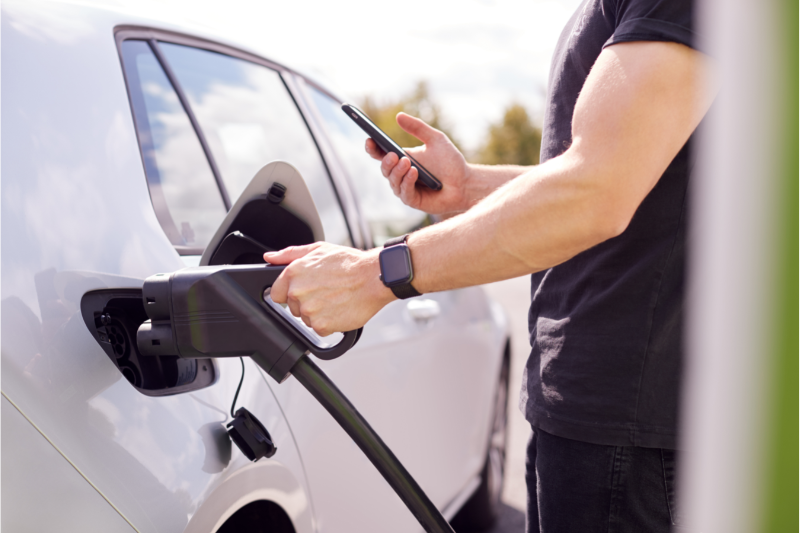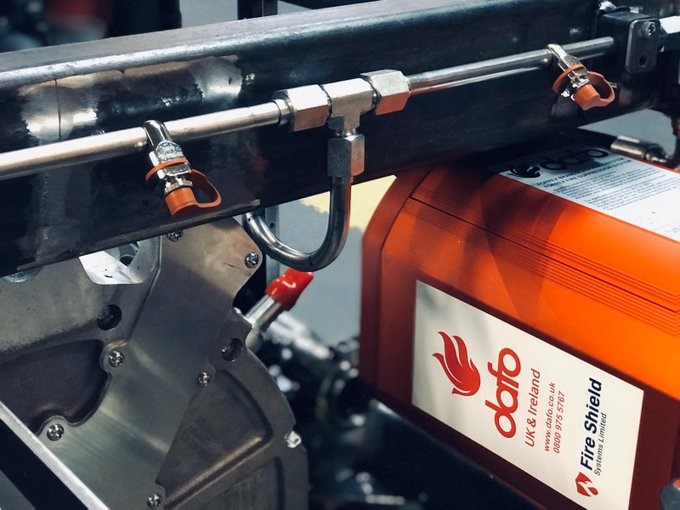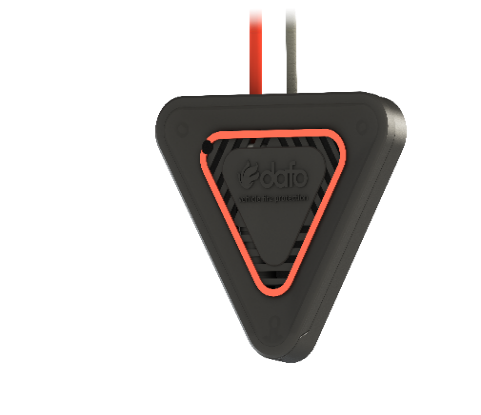An innovative solution to electric and hybrid engine fire risks, delivering a level of safety never before accomplished.
As the world transitions to more renewable sources of energy, electric vehicle (EV) and hybrid electric vehicle (HEV) engines are increasingly replacing their conventional counterparts.
While vehicle fire protection systems have been in development and distribution for decades, EV and HEV engines pose unique fire risks, and, as such, demand a new protection solution.
Fire risks in electric vehicles
Storing large amounts of energy always comes with a certain level of risk, and batteries of any type are no different. Should an EV battery become compromised, such as those used in electric trams, the damage could be severe and widespread.
Lithium is the lightest metal, but it can easily become unstable when combined with other materials. Due to this instability, lithium-ion batteries are at risk of catching fire, should they overcharge. Other causes of battery overheating may also be electrical shorting, rapid discharge and manufacturing defects.


Suppressing fire in lithium-ion batteries is complicated, and requires specialist intervention. Tesla warns that a battery fire could take up to 24 hours to be fully extinguished in a personal vehicle, let alone a commercial vehicle, where thermal runaway and release of a flammable electrolyte can often result in a fire that is extremely difficult to extinguish.
Thermal runaway occurs when a temperature increase alters conditions to result in a further temperature increase. In the case of a Lithium-ion batteries, failure of the battery cells could result in this thermal runaway state, with the ignited battery acting as its own source of oxygen.
One benefit of having a battery as a fuel source, as opposed to a fuel tank, is that battery fires take more time to ignite. However, this could also pose further risks to safety.
A vehicle battery could be damaged without giving out any immediate signs of danger, catching fire sometime after the fact, for example, when the vehicle is stationed overnight in an enclosed space.
Fire risks in hybrid vehicles
The benefits of consuming less fuel and emitting less CO2 has led many manufacturers to produce hybrid electric and petrol/diesel engines, and the availability of these is helping many more people and businesses gradually reduce or offset their carbon emissions.
Hybrid engines pose all the fire risks of electric engines, being equipped with the same Lithium-ion batteries. However, hybrid engines may have the potential to inflict even more damage.
The two separate fuel sources in the engine of the hybrid vehicle present different threats. Additionally, if one fuel source is compromised it is highly likely that the second will also be affected in a chain reaction of combustion.
Our Solution

Electric and hybrid engine fire protection
Our exclusive supplier, Dafo UK and Ireland, developers of the Dafo Vehicle Fire Protection system, a system 40 years in the development, with over 100,000 global installs, has extended its expertise to create a solution which addresses the risks posed by EV batteries.
SafEV (formerly Li-IonFire) is a fire protection system which is capable of monitoring the Lithium-ion battery within a vehicle for the earliest signs of fire and mitigating these risks effectively.
Extensive investigation into risks when charging vehicles, and post-accident procedures were carried out during the product’s development stages. This led to tests on how integrated fire suppression systems (used to protect engine compartments on heavy vehicles) can be applied to EVs and HEVs.
SafEV system activates a warning system at the earliest signs of potential fire, if a potential fire can be detected early enough, there is even a possibility of the battery being reverted to a safe state.
The electric engine fire protection system uses the new Dafo trademarked suppression agent, Forrex EV™, specifically engineered for use in Lithium-ion battery fire situations. Using Forrex EV™, the system employs a method of spot cooling to prevent thermal runaway while localising and suppressing fire.

FAQs
For any further information, please see our list of EV & HEV vehicle battery fire protection frequently asked questions in our collapsable menu below:
Why does a lithium-ion battery catch fire so easily?
Under the right circumstances, SafEV™ (formerly Li-Ion) batteries are highly susceptible to fire risks.
There are many different ways li-ion battery fires can occur, and they often arise following a malfunction in the battery cells. This malfunction can be as a result of mechanical failure or physical damage to the battery, for example. This causes the temperature of the battery cells to rise rapidly.
Once alight, lithium-ion batteries can enter a state called ‘thermal runaway’, where the fire is extremely difficult to control or suppress. In this state, the fire can become a self-sustained process, as it produces its own oxygen to propel the flames.
How can lithium-ion batteries cause fire?
Lithium-ion battery fires can arise in a number of ways, including:
- Malfunction within the battery cells, caused by mechanical failure or physical damage
- Internal overheating of the battery cells
- Excessive heat from its environment
- Excessive heat from friction or ongoing use in the case of electric vehicles or machinery
What to do if a lithium battery catches fire?
Lithium-ion battery fires can be severe. In the event of a li-ion (SafEV™) battery fire, you should call the fire service and notify them that it involves a lithium-ion battery.
Often, if the battery has entered thermal runaway, fire fighters will contain the blaze and leave it to burn itself out over time. This can lead to total equipment loss.
Fire suppression solutions, such as SafEV™, can help to prevent a battery from entering thermal runaway, protecting surrounding valuable assets and teams.
How do you prevent lithium-ion batteries from catching fire?
Lithium-ion battery fires are extremely challenging to extinguish from outside the battery, as the components within the battery will often act to sustain the fire.
To prevent a lithium battery from catching on fire, you should ensure the battery is in good condition and well maintained, and be cautious not to expose it to physical damage or overcharging.
To protect against the fire risks associated with lithium-ion battery fires, a built-in battery fire protection system, like SafEV™, can react quickly to a battery failure or significant temperature increase within the battery cells, preventing the battery from catching fire or possibly exploding.
What type of fire extinguisher is needed for lithium-ion batteries?
Lithium-ion cells contain oxygen, so you cannot starve the flames from outside. The primary goal to tackle a lithium-ion fire once it has started is to try to cool down the battery. This can be done with an internal fire extinguisher built into the battery compartment.
Fire Shield Systems’ built-in fire protection system, SafEV™, monitors the battery for defects such as mechanical failure, overheating and short circuits. When a failure is detected that is likely to lead to a fire or explosion, the SafEV™ system triggers, extinguishing the threat before the battery can catch alight.
Can an uncharged lithium-ion battery explode or burn?
A fully (or almost fully) discharged lithium-ion battery is less likely to explode, as it contains less potential energy. However, the battery itself still comprises flammable materials and it can still catch fire if certain conditions are met.
Explosions are also a risk when charging a ‘dead’ lithium battery, particularly if the battery is left charging after it has reached its full capacity. In this situation, putting excess energy into the cell can cause it to heat up. This can lead to ‘thermal runaway’, where the exothermic energy from the battery itself becomes self-sustaining.

